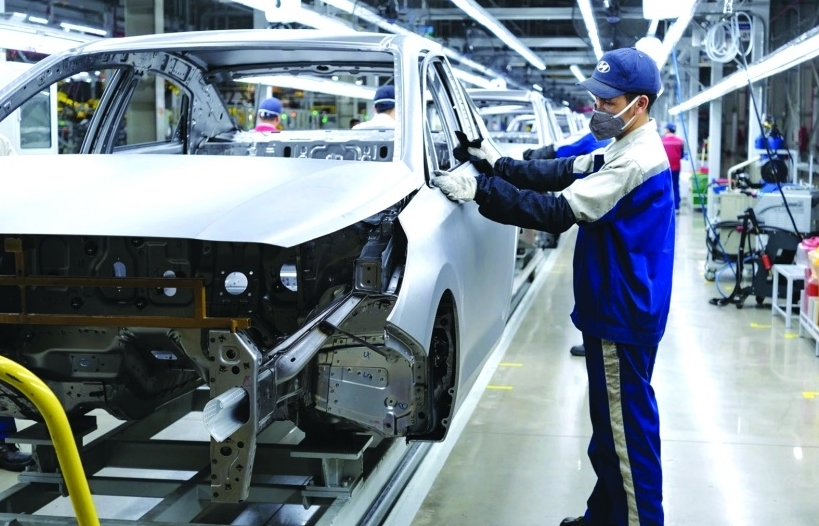Will car prices fall under the EVFTA?
 |
Will prices fall?
Theoretically, after the import tax from the EU falls to 0%, a car costing 1.5 billion VND in Germany will only have to pay 900 million VND special consumption tax (SCT), registration fee 10%, price cars to consumers at about 2.6 billion VND, half the current price.
On the other hand, this is also a matter of 7 to 10 years. During this period, the government's policy regarding goods will see very rapid changes.
More importantly, the car tax is not necessarily reduced. This is evident in the implementation of the ASEAN Trade in Goods Agreement (ATIGA). In January 2018, implementing ATIGA, the import tax on cars (reaching the localization rate of 40%) from ASEAN member countries to Vietnam is 0%. However, in 2018, domestic car prices did not fall as expected. Brands with major imported vehicles from ASEAN such as Toyota, Honda or Ford have reasons to explain why there is no price reduction such as cost adjustment, previous losses or additional equipment.
Therefore, it is expected that the imported models from EU will decrease when the tax reduction is considered to be far away.
Problem from production
With the EVFTA, businesses will have 7-10 years to prepare to "confront" imported cars from the EU.
Currently, cars imported from the EU are mostly from Germany. According to data from the Vietnam Register Department, in 2018 there were 1,197 cars imported from Germany registered for circulation in Vietnam.
In Vietnam, two strong brands, accounting for the majority of the German luxury car market share are BMW (managed and distributed by Truong Hai-THACO Motor Company) and Mercedes (by Mercedes Benz Vietnam - MBV produces, imports and distributes).
Mercedes is currently being implemented by MBV in parallel and imported. German automaker Mercedes-Benz joined the Vietnamese auto market very early on, starting in 1995. Although Mercedes-Benz is the most popular EU automobile brand in Vietnam (in 2017, MBV's sales reached 7,108 units. In 2018, reached 6,269 units and in the first quarter of 2019, reached 1,423 units), but this number was not enough for MVB to boost production and assembly, so its investment in production in Vietnam was limited.
For BMW, this brand has just been taken over by THACO, which is still in complete import, not yet manufactured and assembled in Vietnam. Although THACO did not hide its intention and wished to bring some BMW models assembled in Vietnam, this intention has not yet been implemented.
In addition, THACO also owns another car brand from France – Peugeot – and this brand is being promoted in domestic production. THACO has just inaugurated a Peugeot production plant in Chu Lai, with investment of 4,500 billion VND and a capacity of 200,000 vehicles/year. Currently, a number of locally produced Peugeot models are helping THACO grow quickly (in 2017 Peugeot sales reached 431 units, in 2018 thanks to two domestic assembly lines of 5008 and 3008 total Peugeot sales reached 4,463 units). This increase is said to be a record for a luxury brand in the Vietnamese market, but for production it is not "worth it".
In addition, there are many automobile brands from the European Union such as Audi, Jaguar, Porsche, Volkswagen, Ferrari, Fiat and Bugatti. However, these cars are all imported. Exports are expensive, so there are no impressive sales in Vietnam.
The investment for each business must balance the calculation of the cost and quantity of products. At present, the production of locally assembled cars has reached an average localization rate of about 7-10%. Compared to other countries in the region, the localization rate of Vietnam is far lower (on average, 65-70% is achieved, Thailand is 80%).
In order for the industry to support development with products of good quality and high technology in the current situation, it is very difficult. Few Vietnamese suppliers meet the criteria for participating in the supply chain because of a lack of licensing or technology transfer or licensing agreements from genuine suppliers.
On the other hand, product output is an important factor determining the price and competitiveness of products. Data from VAMA show that there are currently only 11 models of locally produced cars reaching a volume of more than 6,000 vehicles/year.
In particular, the highest is Toyota Vietnam’s Vios model with 27,000 units/year, followed by Grand i10 of Hyundai Thanh Cong with 22,000 units/year. The others are between 6,000 to 15,000 vehicles/year. According to calculations, to develop the automobile industry, a model must reach 50,000 units a year, double the sales of current best-selling cars, to be effective.
Among the current investment projects, Vinfast is the project that will have the highest localization rate, because of the investment in the car body stamping workshop and engine manufacturing workshop; THACO and Thanh Cong are also reaching 40%. However, as stated, to develop, a model must have a turnover of 50,000 cars/year or more, with the same engine production, it must be achieved scale of 50,000-100,000 units/year to be effective.
With FTAs that have been and will be signed, around 2030 the Vietnamese automobile market will be fully open to major automobile production centers in the world including ASEAN, Japan, Mexico and the EU.
It is forecasted that the Vietnamese automobile market will reach 1 million vehicles per year by 2030. People's incomes are increasing and the period of motorization will take place after 2020. Vehicle consumption will increase gradually from the current 300,000 units/year to 1 million units/year in 2030.
So not discussing the price reduction, consider the domestic investment problem to be able to compete with imported products. When it is enough to rise to dominate the domestic market, product prices will then decrease.
Related News

The impact of wage increases on inflation will not be too significant
10:23 | 18/07/2024 Finance

HCM City Customs refunds over VND 49 billion of VAT for foreign passengers
15:44 | 15/07/2024 Customs

Proposal to reduce registration fees to restore growth of domestic automobile industry
09:33 | 07/07/2024 Regulations

Ensure stability and prevent fluctuation in price levels
10:06 | 01/07/2024 Finance
Latest News
HCM City annual international travel expo in September
15:15 | 26/07/2024 Import-Export

Đồng Nai's key export item hopes for recovery
15:12 | 26/07/2024 Import-Export

Rice exports to set record turnover of 5 billion USD in 2024
15:08 | 26/07/2024 Import-Export

4 export markets of tens of billions of dollars
08:19 | 26/07/2024 Import-Export
More News

Difficult for phones to regain No. 1 position in exports
08:17 | 26/07/2024 Import-Export

Indonesia licenses certificates of lobster cultivation for three Vietnamese companies
14:04 | 25/07/2024 Import-Export

Vietnamese spend nearly 150 trillion VND on online shopping
14:03 | 25/07/2024 Import-Export

Four tens of billion USD export markets
09:17 | 25/07/2024 Import-Export

Successful digital transformation solutions for wood industry enterprises
09:14 | 25/07/2024 Import-Export

Vietnamese lychee sold well at Costco stores in Australia
14:10 | 24/07/2024 Import-Export

Durian exports forecast to top 3 billion USD in 2024
14:09 | 24/07/2024 Import-Export

FTA - support to promote pangasius export
09:19 | 24/07/2024 Import-Export

Vietnam - France trade reached nearly US$2.5 billion in the first half of the year
09:18 | 24/07/2024 Import-Export
Your care
HCM City annual international travel expo in September
15:15 | 26/07/2024 Import-Export

Đồng Nai's key export item hopes for recovery
15:12 | 26/07/2024 Import-Export

Rice exports to set record turnover of 5 billion USD in 2024
15:08 | 26/07/2024 Import-Export

4 export markets of tens of billions of dollars
08:19 | 26/07/2024 Import-Export

Difficult for phones to regain No. 1 position in exports
08:17 | 26/07/2024 Import-Export





